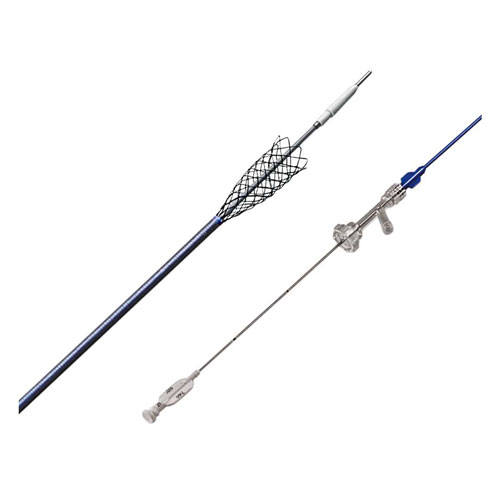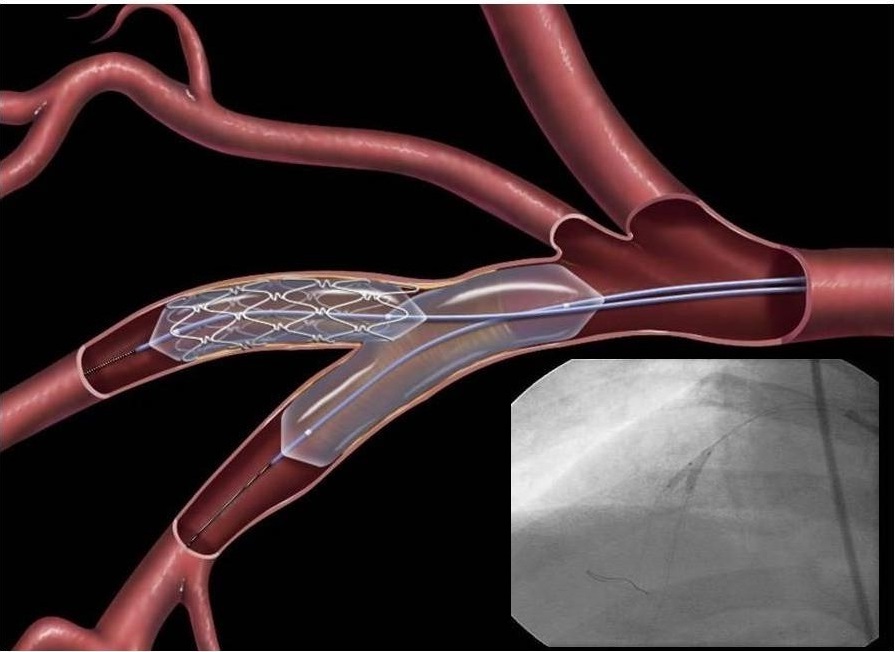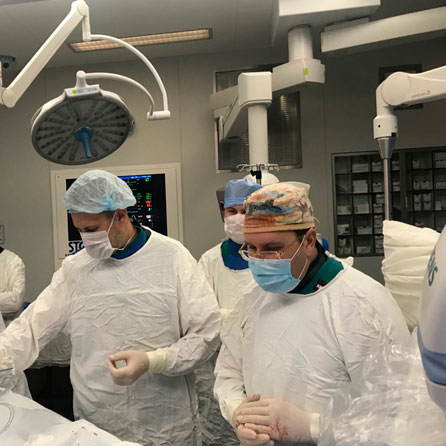
Implantation of a stent into the vessels of the heart is one of the main methods of restoring the normal lumen of narrowed areas of blood flow.
INDICATIONS FOR CARDIAC STENTING
- advanced angina pectoris
- acute coronary syndrome
- recurrent angina attacks during treatment of myocardial infarction
- stable angina pectoris despite adequate medical treatment
CARDIAC STENTING AT THE RCMC
Cardiac stenting is performed using small tubes with multiple cells of complex configuration made of cobalt alloys.
The operation is performed under local anesthesia accompanied by complete radiological control.

A stent is placed in the artery with the help of a special balloon; when the balloon is inflated, the stent is pressed tightly into the arterial wall, thus increasing the lumen of the narrowed vessel. Then the balloon is deflated and removed, and the stent remains in place permanently, being a mechanical obstacle to narrowing of the arterial lumen eliminating the symptoms of coronary heart disease.
CONTRAINDICATIONS
- high body temperature
- acute infectious diseases
- gastrointestinal bleeding
- acute stroke
- contrast agent intolerance
STENTING PREPARATION
- 1-2 weeks before the procedure, blood and urine tests, coagulogram, ECG in 12 leads, chest X-ray and Echo-CG, coronography are performed. If necessary, additional studies are prescribed.
- If recommended by your doctor, temporarily discontinue certain medications.
- 6-8 hours before the examination, stop taking food and liquids.
HOW TO DO CARDIAC STENTING AT THE RCMC
- Call the Contact Center to make an appointment for consultation with the Head of the Department of X-ray Endovascular Surgery A.S. Postoyalko.
- Come for a consultation at the appointed time.
- On the day of hospitalization, sign a contract for paid services at the registration desk
- Pay the invoice at the RCMC cash desk or via ERIP




